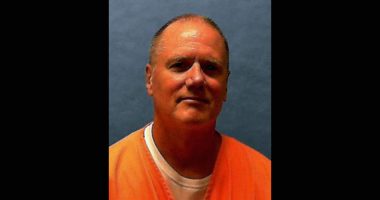
In an understated way that has so far drawn little public attention or interest, the Palm Coast City Council is hoping to convince voters to approve a momentous change in the way the city does business, clearing the way for more borrowing ahead.
The Palm Coast charter governing the city since incorporation in 1999 includes language that, outside of its utility or stormwater funds, strictly limit the city’s borrowing authority, unless voters approve in a referendum.
The charter language reads: “Unless authorized by the electors of the City at a duly held referendum election, the Council shall not enter into lease purchase contracts or any other unfunded multiyear contracts, the repayment of which: extends in excess of 36 months; or exceeds $15,000,000.00.” Put another way: the city may not borrow more than $15 million or any sum that would take longer than three years to repay, without voter approval. In inflation-adjusted dollars, the $15 million would be $29 million, but the charter does not provide for inflation adjustments.
“So this really has a significant limitation on your ability to pay for capital projects,” Chief of Staff Jason DeLorenzo told the Palm Coast City Council Tuesday.
Like the provision that gave Palm Coast the only term limits of any local government, the charter language was a reflection of the political climate of the 1990s, when debt-awareness and talk of balanced-budget amendments was in the air–and the last time (from 1999 to 2002) when the national budget showed a surplus.
The council wants that limitation scrapped. On Tuesday, the council approved a proposed referendum that would go before city voters in November, asking them whether they’d be in favor of eliminating those lines, including the $15 million and 36-month limits thresholds, and giving the city authority to borrow through long-term partnerships or other means.
The proposed charter language that would replace the existing provision is open-ended and somewhat vague if not deceptive. It reads: “Shall Article VI of the charter be amended by removing provision 3 (e) related to fiscal contracting authority that limit the city’s ability to enter into public private partnerships, respond to emergencies and have the ability to address growth by having future residents contribute to infrastructure costs.”
Key terms like “emergencies,” “growth” and even “public private partnerships” are not defined. The reference to “future residents” is simply false: all residents are potentially on the hook for future debt even if at times some may not be, as the city’s finance director later explained.
Council member Ed Danko noted the vagueness of words like “emergency” and of the ballot wording as a whole. “Right now, the way you have–and I know it’s your first draft–it’s like, what did he just say? It’s kind of like, I’m not going to vote for this because I don’t even understand it,” Danko said. “”It’s important that we get that language down a little more precise.”
Council member Theresa Pontieri wanted the wording more specific to fiscal contracting, even if it may seem redundant. “We’re asking the residents to do a pretty big thing and I think it’s a great thing, but in an effort to be transparent and to give them as much information as possible, I think that it’s incumbent upon us to be clear and to me, adding just that one word makes this that much more clear.”
As for emergencies, DeLorenzo had the council imagine if a natural disaster destroyed City Hall. “That is the kind of borrowing you might need,” he said. “You can only imagine how the city we’re trying to operate without having a place for all the people in this building to work.”
But it doesn’t have to be emergencies. Council member Nick Klufas tied the potential borrowing–without using words like borrow or debt–on “the opportunities that are unlocked specifically for westward expansion.” The city has its eyes on financing a huge, $93 million sports complex on the west side of the city. That’s where a private public partnership would be used, based on a consultant’s presentation to the council in February.
There are built-in, constitutional safeguards against borrowing. No local government may borrow against the city’s revenue drawn from property taxes without a referendum regardless. The charter provision addresses other revenue sources such as how the city might use impact fees to secure a debt, or possibly revenue from sales tax (though the county’s existing sales surtax may not be so used, because the county approved it without going to referendum).
The charter goes further. It has “handcuffed” the council’s ability to finance capital projects, Pontieri said, forcing the city to pay as it goes. “”This certainly gives us the ability to bond out and borrow against what future revenues will be from future residents,” Pontieri said. “So all of the residents now who are justifiably upset that their fees and their taxes are going up because of growth. This allows us to borrow against future impact fees. It allows us to enter into these public private partnerships that allow us to kind of look to the future revenues that are going to be coming in from future residents.”
But not just future residents. If borrowing were necessary to rebuild City Hall, for example, or to rebuild a bridge or replace a fire truck damaged in accident, impact fees could not be used wither directly or indirectly: they may legally be used only for new developments, additions or expansions. Not replacements. Money available to secure debt would not be limited to impact fees, but to any non-property tax revenue. The general fund adds up to $56 million. But only $35 million (or 63 percent) of that is from property taxes. The city’s share of the local sales surtax, for example, generates over $4 million a year, and is expected to reach $5.5 million in 2029.
City Finance Director Helena Alves also pointed out a key factor in the assumption that impact fees levied on “future residents” will secure debt: “it wouldn’t be a very attractive loan for investors,” Alves said, because impact fees depend on a strong economy. If the economy cools or tanks, so do impact fees, so does that revenue, leaving a debt hanging.
Though Alves did not mention it–she was not here at the time–that’s precisely what happened to Palm Coast after the great crash, when the city had pledged impact fees to build water and sewer utility plants, and found itself holding debt it couldn’t pay from that vanished revenue. It had to raise water and sewer rates 17.6 percent in 2013 to satisfy bond holders. Existing residents, not new residents, took the brunt of that new cost.
It’s also what happened when the city four-laned Old Kings Road nearing State Road 100, on the assumption that Walmart was on the way with a supercenter there. Walmart never materialized, nor did other developments, forcing the city to borrow from its utility fund, then to shift that debt to a special taxing district still impacting current property owners along Old Kings Road, to service the debt. (See: “Speculative Bust: How Widening Old Kings Road Left Palm Coast on Hook for $6.7 Million,” and “Palm Coast Approves Surtax Tool as It Looks To Recoup Old Kings Road Widening Costs.”)
Klufas alluded to those possible situations in what he called “that slippery slope.”
“There’s a reason that we as a city have been paid as we go for this entire time. Just be careful in the future trying to use non [property] tax revenue as a dedicated source for these things,” Klufas warned, saying the debts can; be wrapped up in the sort of creative financial schemes that became popular–and ruinous to those who used them–before the housing crash. “Those type of unsure revenue sources, I don’t want to call it a slippery slope, but it does present an issue because we’re committing to that development,” whichever it may be, and “”that’ll never be able to be changed. So food for thought.”
Mayor David Alfin wants “a robust informative education, communication from now to the time that this would be voted on by the public.” He especially wants public private partnerships explained to the public. The administration did not have that plan in hand, but Interim Manager Lauren Johnston said that would be put in place now that the proposal has been approved. Klufas said “this is going to be difficult to ask the elected body to be out there to champion this effort,” leaving it to the administration to carry that burden.
But as with any information campaign that involves debt, taxes and elections, interpretation, wording and PR will play a significant role, depending on the source.
As for guardrails, which Pontieri in previous discussions about this proposal said would be essential, those, too, were not in evidence. Danko asked for an explanation. DeLorenzo said the state Constitution and the ordinance language lay that out–“the City Council continues to remain committed to following the
principles of financial accountability and transparency as outlined in Resolution 2013-111,” the ordinance states in one of its “whereases,” though voters don’t generally look up ordinances, nor are they likely, or aware, of a resolution dating back to 2013.
That resolution (referred to as Ordinance 2013-111 in DeLorenzo’s presentation to the council), is the city’s debt-management policy. More like a mission statement, it merely states that the city will pay its debts and plan soundly to protect its credit rating. It does not specify standards, allowances or prohibitions.
Mike Norris, one of the candidates for mayor and the only person to address the council after its discussion, pledged “to put as much money for my campaign as I possibly can to campaign against it.”
“I’m willing to put this on a ballot I don’t think it’s something we should just decide not to do,” Danko said. “I think voters need to make that decision.” Council members agreed before approving the proposal 4-0 (Cathy Heighter was absent). The ordinance must be approved at a second reading likely in two weeks.
charter-borrowing-amendment










